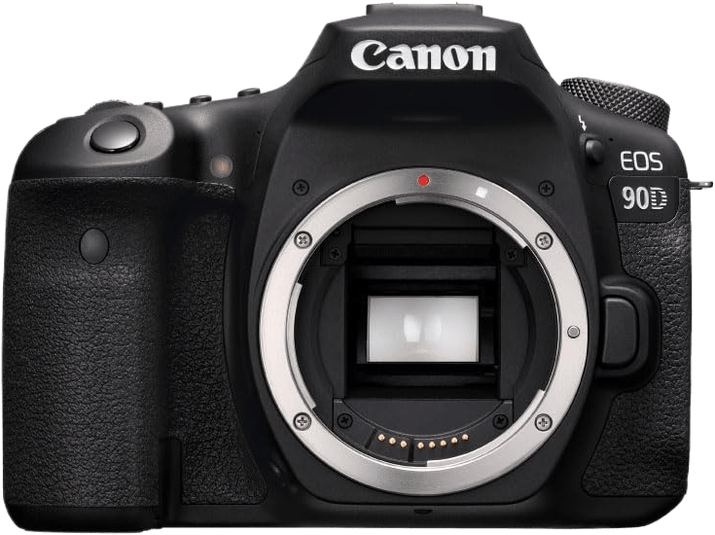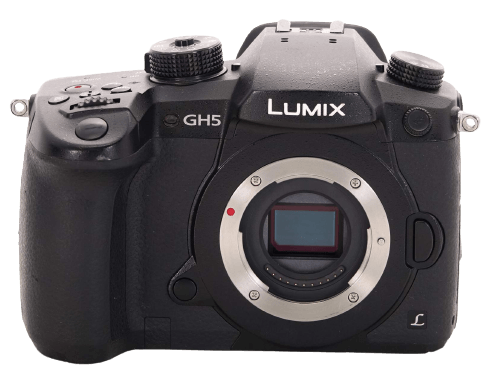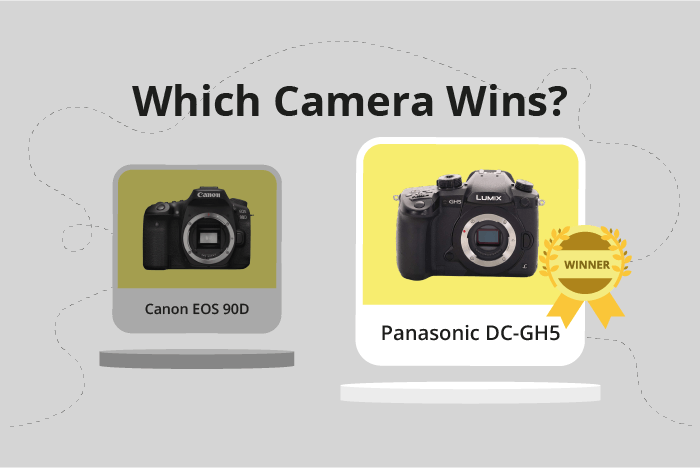Canon EOS 90D vs Panasonic Lumix DC-GH5 Comparison
Canon EOS 90D

Panasonic Lumix DC-GH5

The Panasonic Lumix DC-GH5 outperforms the Canon EOS 90D with a score of 72/100 compared to 67/100. Both cameras share similarities such as being released in the late 2010s and having similar dimensions and weights. However, the Lumix GH5, a mirrorless camera, excels with a higher score due to its advanced features and overall performance.
The Canon EOS 90D, a DSLR, is better in terms of affordability, as it has a launch price of $1199 compared to the GH5’s $2000. Despite its lower score, the EOS 90D is still a strong contender for those seeking a budget-friendly option.
Taking all features and performance into account, the Panasonic Lumix DC-GH5 stands out as the superior camera, while the Canon EOS 90D offers a more affordable alternative.
Canon EOS 90D vs Panasonic Lumix DC-GH5 Overview and Optics
The Panasonic Lumix DC-GH5 outperforms the Canon EOS 90D in optics, scoring 67/100 compared to the 90D’s 62/100. Both cameras share several similarities in their specifications, such as having CMOS sensors, compatible lens mounts, and similar aspect ratios (4:3 for the GH5 and 3:2 for the 90D).
The GH5 has several advantages over the 90D. Firstly, it has a higher DXOMARK score for the sensor (77 vs. 58), indicating better overall image quality. Additionally, the GH5 offers a faster shooting speed of 12 fps compared to the 90D’s 10 fps, allowing for better action and sports photography. The GH5 also features image stabilization, which the 90D lacks, helping to reduce camera shake and improve image sharpness.
The EOS 90D, on the other hand, boasts a higher megapixel count at 33 compared to the GH5’s 20.3. This results in larger, more detailed images, although it may not be a significant advantage for most users. The 90D also has a larger sensor size (APS-C) than the GH5 (Micro Four Thirds), which can contribute to better low-light performance and increased dynamic range.
Despite the higher megapixel count and larger sensor size of the Canon EOS 90D, the Panasonic Lumix DC-GH5 emerges as the winner in optics due to its superior DXOMARK sensor score, faster shooting speed, and the presence of image stabilization. These factors make the GH5 a better choice for photographers seeking optimal image quality and performance in various shooting conditions.
Canon EOS 90D vs Panasonic Lumix DC-GH5 Video Performance
The Canon EOS 90D outperforms the Panasonic Lumix DC-GH5 in terms of video capabilities, scoring 91/100 compared to the GH5’s score of 69/100. Both cameras have 4K video resolution, with the 90D offering maximum dimensions of 3840 x 2160, while the GH5 provides slightly larger dimensions at 4096 x 2160.
The Canon EOS 90D excels in its maximum video frame rate, offering 120fps, which is double the GH5’s 60fps. This higher frame rate allows for smoother video playback and more flexibility when capturing fast-moving subjects or producing slow-motion footage. Additionally, the 90D has built-in time-lapse functionality, which the GH5 lacks. This feature enables users to easily create time-lapse videos without needing additional equipment or software.
While the Panasonic Lumix DC-GH5 has a lower video score, it does offer larger maximum video dimensions, giving users a slightly wider aspect ratio for their footage. However, this advantage is minor compared to the benefits provided by the Canon EOS 90D’s higher frame rate and time-lapse functionality.
Considering the video capabilities of both cameras, the Canon EOS 90D is the clear winner with its higher frame rate and built-in time-lapse feature. The Panasonic Lumix DC-GH5 has a slight edge in video dimensions, but this is not enough to outweigh the advantages offered by the 90D. Users seeking a camera with superior video capabilities should opt for the Canon EOS 90D.
Canon EOS 90D vs Panasonic Lumix DC-GH5 Features and Benefits
The Panasonic Lumix DC-GH5 emerges as the winner in the features comparison with a score of 87/100, while the Canon EOS 90D scores 83/100. Both cameras share several key specifications, including having a touchscreen, flip screen, WIFI, and Bluetooth capabilities. However, neither camera has GPS functionality.
The Lumix DC-GH5 outperforms the EOS 90D in screen size and resolution. With a 3.2-inch screen, the GH5 offers 0.2 inches more screen space than the 90D’s 3-inch screen. Additionally, the GH5 boasts a higher screen resolution of 1,620,000 dots, compared to the 1,040,000 dots of the 90D. This difference in screen size and resolution provides the GH5 with a clearer and more detailed display, which is beneficial for photographers and videographers when framing shots and reviewing images.
On the other hand, the Canon EOS 90D still holds its ground as a competitive camera. Despite the lower feature score, it offers the same connectivity options as the Lumix DC-GH5. Both cameras have WIFI and Bluetooth, making it easy to transfer images and control the camera remotely.
Taking these aspects into account, the Panasonic Lumix DC-GH5 offers superior screen size and resolution, making it the preferable choice for users who prioritize display quality. However, the Canon EOS 90D remains a viable option for those who value connectivity features and do not require the larger screen and higher resolution provided by the GH5.
Canon EOS 90D vs Panasonic Lumix DC-GH5 Storage and Battery
The Panasonic Lumix DC-GH5 wins in the storage and battery category with a score of 57/100, while the Canon EOS 90D scores 48/100. Both cameras have similarities in their storage specifications, such as accepting SD, SDHC, and SDXC memory cards with UHS-II compatibility. However, the Lumix DC-GH5 pulls ahead with its two memory card slots, giving it an advantage over the EOS 90D’s single slot.
In terms of battery life, the Canon EOS 90D outperforms the Lumix DC-GH5 with 1300 shots per charge compared to the GH5’s 410 shots. Despite this, the overall score still favors the GH5 due to its superior storage capabilities. Neither camera offers USB charging.
Considering the storage and battery aspects, the Lumix DC-GH5 is the better choice for those prioritizing storage and memory card management. However, the Canon EOS 90D is a strong contender for users who value longer battery life.
Alternatives to the Canon EOS 90D and Panasonic Lumix DC-GH5
Are you still undecided about which camera is right for you? Have a look at these popular comparisons that feature the Canon EOS 90D or the Panasonic Lumix DC-GH5:

